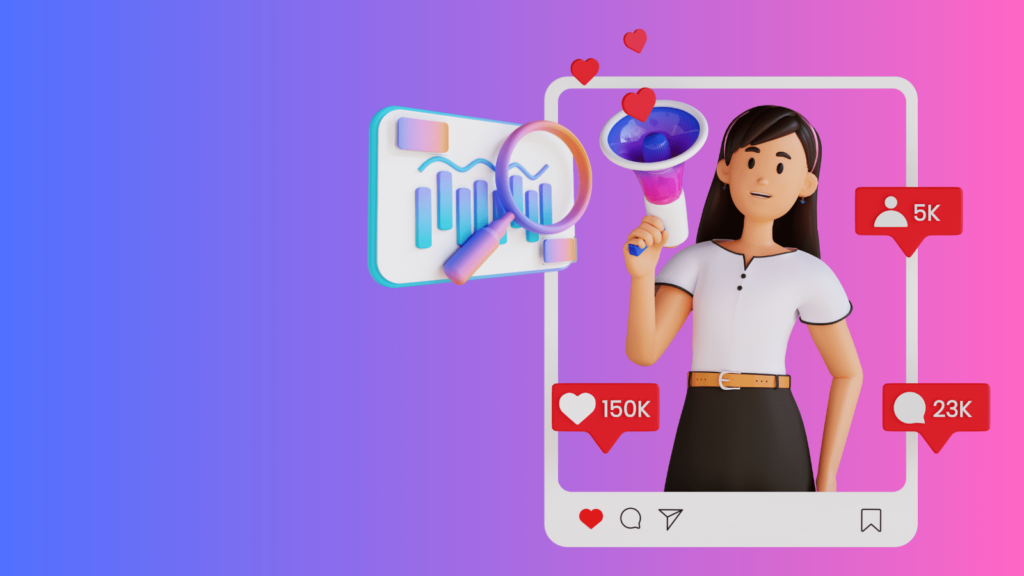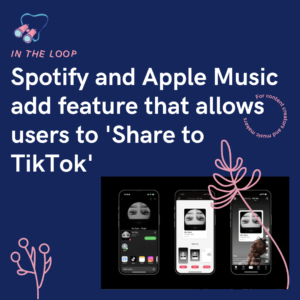Instagram influencers are everywhere these days, shaping trends and promoting brands. But how do you know who’s the real deal? How can you see beyond the filters and hashtags? Guest post by Margo Ovsiienko.

This guide breaks down the process of influencer analysis, focusing on authenticity, reach, and engagement. Whether you’re a brand looking for the right fit or an influencer trying to navigate the space, this guide gives you the tools to make smart decisions in the world of social media.
Why analyse Instagram influencers?
Analysing Instagram influencers is not just a luxury; it’s a necessity in today’s digital landscape because it can impact the success of your campaigns, collaborations, and growth strategies.
Let’s delve into the three core motivations for such analysis:
1. Optimal brand collaboration
Collaborations aren’t just about numbers; they’re about aligning values, aesthetics, and influence. By using platforms such as Shoutcart or Fameswap, you can access a wide pool of influencers in your niche and make sure they align with the company’s values.
2. Influencer networking
If you’re an influencer yourself, connecting with the right peers ensures fruitful collaborations aligned with your values and audience. This network can enhance your exposure, bring diverse opportunities, and create a mutually beneficial community.
3. Unveiling growth tactics
Exploring influencer strategies helps unearth effective methods for Instagram growth, benefitting both brands and influencers. Learning from others’ successes and missteps is a powerful way to stay ahead in the ever-changing landscape.
4. Spotting the real from the fake
In an environment where numbers can be deceiving, influencer analysis serves as your detective’s magnifying glass. It helps you separate genuine influence from inflated numbers. By scrutinising factors like follower growth patterns and engagement ratios, you unveil whether an influencer’s impact is authentic or merely a facade.
5. Evaluating genuine engagement
The world of likes and comments can be a maze of illusion. But influencer analysis lets you cut through the noise. By assessing the quality and depth of engagement an influencer garners from their audience, you gain insights into the true connection they hold with their followers.
Manual analysis: step by step
Not all influencers are created equal, and their impact can vary widely. So what’s the best way to check influencers’ impact as a creator and authenticity? It’s best to do manual checks.
Manual influencer analysis involves a thorough examination of an influencer’s online presence, engagement rates, authenticity, and reputation. This process goes beyond surface-level metrics and delves into the influencer’s content, audience, and credibility.
By using this step-by-step approach, you can gather valuable insights about your chosen influencers and help you make successful partnerships. Let’s look closer at the process.
1. Data collection
Utilise platforms such as Fameaudit to evaluate the authenticity of followers. Before diving into more complex metrics, gather essential information to inform your analysis.
- Conduct a Google search to unveil any potential scandals or controversies linked to the influencer. This preliminary research gives you an overview of their public perception.
- Explore other social media platforms they might be on. Consistency across platforms reflects a more genuine digital presence.
- Evaluate their Instagram account to grasp the essence of their content and engage with their audience. This initial observation provides insights into their posting frequency, content themes, and engagement levels.
- Request screenshots of audience statistics from influencers to gauge their authenticity. Direct insights into their demographics and engagement rates set the foundation for a deeper analysis.
2. Analysing the influencer’s audience
Understanding an influencer’s audience is key to determining their true reach and effectiveness. The goal is to separate genuine engagement from superficial metrics, such as fake followers or likes. Here’s how:
- Spotting fake engagement: identify fake followers through accounts with generic usernames and empty comments. These superficial interactions signal inauthentic engagement.
- Engagement ratio: verify if there’s a balanced ratio between likes and comments, ideally within the range of 0.5 – 5 comments per 100 likes. An unusually high or low ratio can indicate manipulated engagement.
- Consistency in likes: take note of varying likes across posts. A consistent number of likes on all posts may suggest the use of fake engagement tactics.
3. Scrutinising the influencer’s target audience
Assessing an influencer’s target audience goes beyond mere numbers. It involves evaluating whether their audience aligns with your intended target demographic. Two critical factors come into play:
- Demographics: compare shared demographics with your target profile to ensure alignment in terms of location, age, and gender.
- Audience interests: utilise analytical tools to understand followers’ interests and determine if they resonate with your brand’s niche. This alignment increases the likelihood of a successful collaboration.
4. Uncovering engagement rates
Engagement rate is a telling metric of an influencer’s impact. While calculating it manually is an option, utilising analytical tools provides more accurate insights:
- Calculate engagement rate manually by factoring likes, comments, posts, and followers. This gives you a baseline understanding of their engagement levels.
- Utilising analytical tools provides accurate engagement rates for multiple influencers.
5. Assessing follower growth
Understanding an influencer’s follower growth pattern is vital to identifying genuine growth from giveaway-driven spikes. Here’s how to interpret their follower numbers:
- Monitor consistent audience growth or decline. A monthly fluctuation of 1-5% is typical and reflects organic growth.
- Sudden spikes in followers could indicate giveaway-driven follower growth, resulting in an untrustworthy audience. Such audiences might not be genuinely interested in the influencer’s content or recommendations.
6. Evaluating content strategy
Reviewing an influencer’s content is crucial to understanding their niche, tone, and audience engagement:
- Scrutinise Instagram posts to comprehend the influencer’s niche and communication style. This insight helps you tailor collaboration pitches more effectively.
- Identifying favoured content types provides insights into what resonates with their audience, enhancing your ability to design engaging campaigns.
7. Scrutinising likes’ origin
Verifying the origin of an influencer’s likes ensures the authenticity of their audience and engagement:
- Ensure a substantial portion (80-90%) of an influencer’s likes stem from their followers. This validates their target audience and increases the likelihood of reaching genuine potential customers.
8. Investigating previous collaborations
An influencer’s past collaborations provide valuable insights into their reputation and suitability for your brand:
- Leverage influencer search tools to identify past collaborations and associated brands. This history reflects their professionalism and alignment with your values.
- The quality of brands and influencers they’ve collaborated with speaks volumes about their credibility. Positive associations indicate trustworthiness and authenticity.
Wrapping up
Analysing Instagram influencers is a blend of art and science. It requires meticulous data collection, critical thinking, and an understanding of human behaviour. Now, you are more equipped to make wise decisions about your next influencer collaboration. Remember, the more you practice this analysis, the more efficient you’ll become. Begin your journey to influencer enlightenment and success today by experimenting with manual influencer analysis we have covered in this article.
Author’s bio
Margo Ovsiienko is an experienced Product Marketing Manager who’s worked for fast-growth tech companies for the last 7 years. She often contributes to marketing blogs and shares her experience on topics related to conversion rate optimisation, content marketing, and more.






